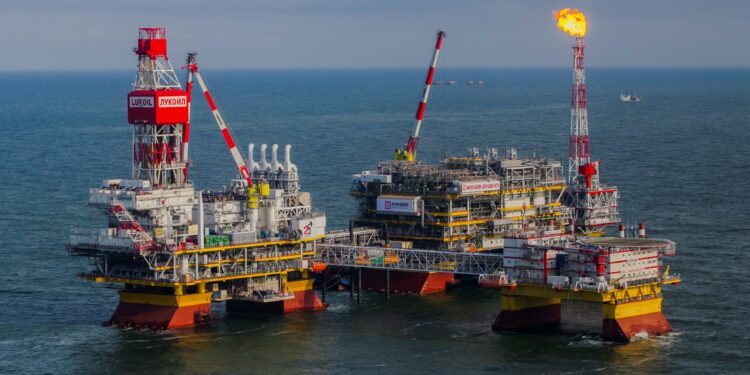Namibia may tap its trillion dollar oil & gas windfall to fuel renewables ambitions
According to a 2023 report from the Global Center on Adaptation, Africa needs a tenfold increase in climate adaptation finance, reaching over US$100 billion annually by 2035, to bolster resilience against escalating climate change impacts.
With Namibia’s oil and natural gas exploration program delivering windfall results, the pressure to use this abundance to drive growth and advance its renewable energy sector is huge.
Bonface Orucho, bird story agency
Namibia has been advancing extensive oil and gas exploration, and making substantial discoveries. Portuguese oil and gas company recently announced another discovery of “a significant column” of light oil in high-quality reservoirs.
A press statement from Galp on March 15, confirmed the find at the Mopane-2X well in the larger Orange Basin, off the Namibian Coast, adding to its oil discovery spree in the southern African country.
In a 2024 interview on Energy Capital & Power, Maggy Shino, Petroleum Commissioner of Namibia’s Ministry of Mines and Energy, explained that almost all exploration wells drilled between February 2022 and July 2023 yielded positive indications of hydrocarbons.
Shell’s Graff-1 find holds around 200 million barrels of oil, while TotalEnergies’ Venus-1 could have up to 2 billion barrels. Shell’s Jonker-1X adds another 300 million barrels to their reserves.
Shell and TotalEnergies’ discoveries are estimated at 11 billion barrels of crude oil. Drilling these volumes could add Namibia to the list of Africa’s top oil producers, with Bloomberg estimating that the discovery by TotalEnergies SE and Shell Plc is valued at about US$1 trillion at current prices.
However, Namibia is advancing its exploration of hydrocarbons at a time when there is increased pressure to downscale the extraction of fossil fuels in favour of renewables.
At COP 28 in Dubai, for instance, delegates agreed to the “Global Stocktake,” an ambitious strategy that, among others, seeks to intensify efforts to shift away from fossil fuel reliance in energy systems.
<script src=”https://bird.africanofilter.org/hits/counter.js” id=”bird-counter” data-counter=”https://bird.africanofilter.org/hits/story?id=1638&slug=namibia-may-tap-its-trillion-dollar-oil-and-gas-windfall-to-fuel-renewables-ambitions” type=”text/javascript” async=”async”></script>
However, according to experts, the discoveries in Namibia, just as those in Africa’s oil-rich countries, can be strategically used to build a more robust economy that is better able to implement climate goals.
Chukwumerije Okereke, a professor of global climate governance and public policy at the University of Bristol, UK, explained in an article in The Conversation that the narrow view of either “no to gas” or “yes to gas” in Africa is often unhelpful when framing the continent’s climate, energy and development challenges.
“What Africa urgently needs is a credible plan for economies to avoid the need to transition to gas in the long run. That must include technical and financial support to scale up renewables in all countries, so they can build self-reliant, prosperous economies,” he explains.
The government estimates through the ministry that the initial oil finds alone are likely to double the size of its US$12.6 billion economy by 2040.
Namibia is already making huge progress in transitioning to renewables, especially green hydrogen. Three pilot projects—the Hyrail Dual-Fuel Locomotive, Daures Green Hydrogen Project and Cleanergy Green Hydrogen Service Station—will begin operations in 2024.
Besides, Namibia’s dedicated green hydrogen blended finance vehicle, SDG Namibia One Fund, acquired a 24% stake in the country’s largest green hydrogen development, the US$10 billion Tsau-Khaeb Green Hydrogen project, earlier this year.
The Tsau-Khaeb Green Hydrogen project has a capacity of 7 GW of renewable energy and 3 GW of electrolyzer, and it targets to produce two million tons of green hydrogen per year upon completion.
However, as Okereke explained, countries’ climate targets “are conditional on the receipt of international support, which is not forthcoming.”
Namibia’s updated NDC goals target generating 70% of its electricity from renewables by 2030. Achieving this requires a net cost of US$4 billion for mitigation and an extra US$1.7 billion for adaptation, totalling over US$5 billion in funding needs by 2030.
Beyond Namibia, countries like Ivory Coast are accelerating their oil exploration drive. Fueled by Eni’s groundbreaking find of light oil, gas, and condensates in Block CI-205, Ivory Coast is fervently advancing its oil and gas aspirations. The significant Calao discovery, ranked second to the Baleine field and already in production since August 2023, underscores the nation’s burgeoning focus on the oil industry.
South Africa is also breaking new ground on natural gas, aiming to diversify its energy mix away from coal. In a bold move this January, the country launched a major gas terminal project at the Port of Richards Bay, spearheaded by Vopak NV from the Netherlands.
As of 2022, exploration and exploitation projects of newly discovered reserves were underway in 48 countries on the continent.
According to a 2023 report from the Global Center on Adaptation, Africa needs a tenfold increase in climate adaptation finance, reaching over US$100 billion annually by 2035, to bolster resilience against escalating climate change impacts.
bird story agency


